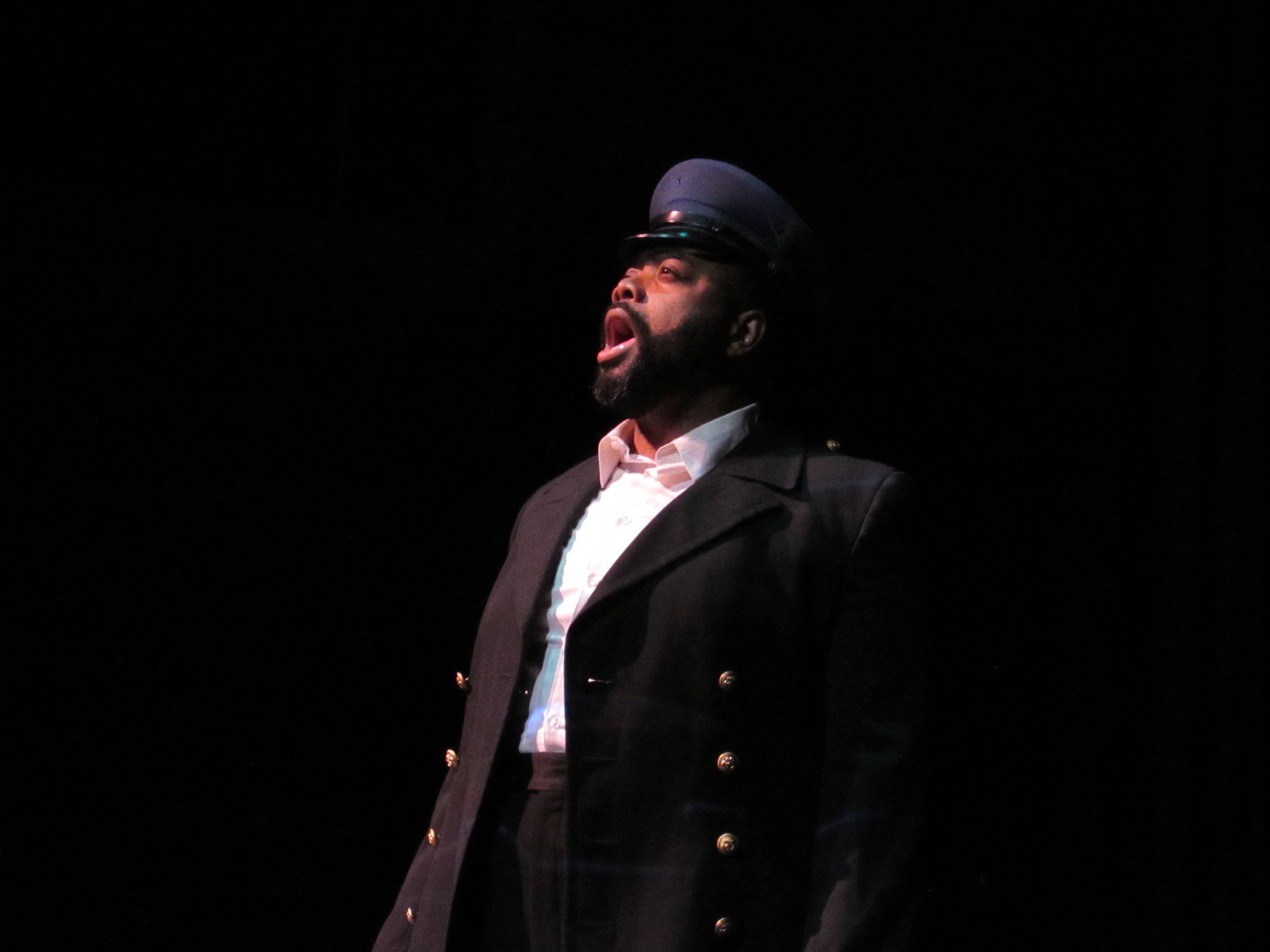“The Princess Sophia” is nearly ready for its maiden voyage.
The opera named for the ill-fated ship makes its world premiere 8 p.m. Thursday in Juneau-Douglas High School’s auditorium.
“If the audience responds the way I respond, even during rehearsals, they’ll have to pass out a lot of hankies,” said Dave Hunsaker, the opera’s librettist, during a Saturday rehearsal with orchestration.
Katy Giorgio, producer for the opera, acknowledged Thursday is an odd opening night, but it means the opera commissioned by the Orpheus Project will mark the 100th anniversary of the sinking of the Princess Sophia, which claimed the lives of more than 350 people.
Hunsaker, a screenwriter who splits time between Juneau and Los Angeles, said from his Juneau residence he can see Lynn Canal, where the ship struck Vanderbilt Reef.
He also had often heard about the wreck often over the years.
“There was only one passenger from Juneau, but it’s ended up being a Juneau tragedy,” Hunsaker said.
Genevieve Carson, the opera’s choreographer and director of the Los Angeles Contemporary Dance Company, is from Juneau and said working on the project has been unique.
“It’s pretty special to be working and collaborating in my hometown,” Carson said.
Carson said her knowledge of the wreck and experience in Juneau shaped her work on “The Princess Sophia.”
But for non-Juneauites, the story isn’t well known.
Others involved in the production had not previously heard of the wreck, which in 1918 was overshadowed by the end of World War I and a Spanish Influenza outbreak, as well as the recent sinkings of the Titanic and Lusitania.
“People didn’t want to read about more death,” Hunsaker said.
José Rubio of Portland, who portrays Walter Harper in “The Princess Sophia,” had previously not heard about the wreck. Harper and his wife Frances are both buried in Juneau.
Rubio said that sense of place and connection is special.
“To have a project like this, where we’re singing about something that happened here is a luxury,” Rubio said.
Another highlight of the project, Rubio said, is working directly with a librettist and composer.
“Instead of something that was written 400 years ago, if we have questions about something, we can ask them,” Rubio said.
Emerson Eads, who composed the opera, watched a Saturday rehearsal through a laptop from North Dakota.
He and Hunsaker were able work collaboratively, and the two men credited each other for creating tension in a story with a well-known conclusion.
“The Princess Sophia” is Hunsaker’s first opera, and Eads said Hunsaker’s screenwriting background helped him compose.
“He made it very easy to do,” Eads said. “He sets it up exactly like a movie, too.”
Eads’ music makes use of Morse code patterns, provides sound to the storm that made rescue for those about the Sophia impossible and incorporates the Lord’s Prayer in a moment that Eads and Hunsaker independently picked as among their favorite parts of the opera.
Eads said he’s also partial to a scene in which the Sophia sings a lullaby to its drowning passengers.
“It seemed to me the story is so sorrowful and so sad,” Hunsaker said. “Maybe there was a moment of solidarity. It seemed to be a way of making something that was really sad without making it really violent.”
In addition to a voice, the Princess Sophia will also be represented by a dancer, Carson said.
She said among her favorite parts of the opera is a scene in which a dancer portraying the Sophia has their costume torn by elemental dancers.
“The sequence is pretty complicated but visually stunning,” Carson said.
Backgrounds drawn by local artist Dan Fruits will also provide visual spectacle.
They will be projected by laser projectors shipped from Seattle, which projection designer for the opera Greg Mitchell, was calibrating Saturday.
In absence of an uncertain outcome to lean on for drama, “The Princess Sophia” focuses on the ship’s passengers and presents them as people instead of statistics, Hunsaker said.
“It connects with them as human beings, and not just the number 353,” Hunsaker said.
But while some names and occupations may be real, it’s not intended to be wholly accurate, aside from some letters that are quoted exactly as written.
“It doesn’t pretend to historically represent what they might have said, except for the two letter writers,” Hunsaker said.
Possible discrepancies include a depiction of a dog that may or may not actually have been the Princess Sophia’s lone survivor.
“I personally can’t imagine a creature covered in oil survived a swim of 14 miles,” Hunsaker said.
But he said the possibly apocryphal story was passed on for a reason, and it adds a silver lining to the otherwise bleak tale.
“If there’s a lie that’s invented, whether it’s George Washington’s cherry tree or the dog, it’s because there’s a historical need,” Hunsaker said. “We needed something to survive it.”
Know & Go
What: “The Princess Sophia” opera
When: 8 p.m. Thursday, Oct. 25, 8 p.m. Saturday, Oct. 27 and 2 p.m. Sunday, Oct. 28
Where: Juneau-Douglas High School auditorium, 1639 Glacier Ave.
Admission: $20-$45 and tickets are available online at orpheusproject.org.
• Contact arts and culture reporter Ben Hohenstatt at 523-2243 or bhohenstatt@juneauempire.com.

